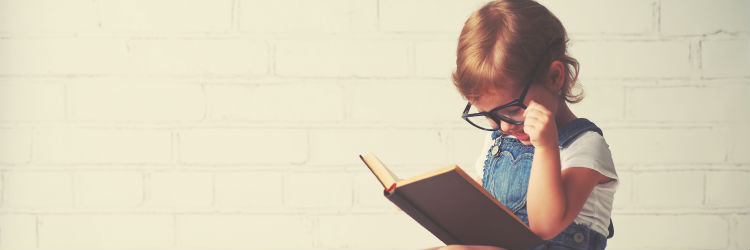Relax through story-telling and write your first children’s book!

Have you ever wanted to write a children’s book but not sure where to start? Or maybe you have kids of you own and would like to write your own stories for them? Perhaps you’re looking for a new hobby and would like to flex your creative muscles? Whatever the reason we have the perfect starting point for you. Writing is not only a popular hobby but can also be very relaxing.
Below you will see the seven main plots use in children’s stories, so choose your favourite, pick up a pen and start writing!
Overcoming the Monster
In this plot the protagonist (your hero or main character) finds themselves faced with an enormous challenge usually involving (or personified by) a monster. The hero’s challenge is to defeat the monster and save the day.
The Gruffalo by Julia Donaldson and Axel Scheffler is a good example of this as it features a fearsome monster reputed to have ‘Terrible teeth in his terrible jaws.’ Other examples from children’s literature would be Little Red Riding Hood, The Three Little Pigs and, for adults, James Bond fits the bill nicely.
Rags to Riches
Cinderella and The Ugly Duckling are good examples of the rags-to-riches plotline. At the beginning of the story an ordinary, nothing-special sort of character is shown being ignored or treated badly or simply suffering from a lack of self-esteem. By the end of the story they’ve found the means to transform themselves and subsequently live happily ever after.
The Quest
Your main character is obliged (often unwillingly) to go on a long, tortuous, demanding journey in order to save somebody or something, or even the entire world. From teenage literature, His Dark Materials, Lord of the Rings and Harry Potter are good examples of this, and a gentler example from the world of picture books is How to Catch a Star by Oliver Jeffers.
Voyage and Return
Often interchangeable with the plot just described, voyage and return usually involves the main character travelling into a different or unfamiliar world. After an initial excitement and sense of wonderment, it soon becomes apparent that danger lurks around every corner and, ultimately, escape becomes imperative. The best-selling picture book, We’re Going on a Bear Hunt, is a good example of this and, for older children, Alice in Wonderland and His Dark Materials.
Comedy
The stuff of romantic fiction, comedy often involves an intricate plot full of misunderstandings which are resolved in the end with the hero or heroine living happily ever after. The wonderful books of Jane Austen are a good example of this but, for obvious reasons, romance isn’t normally a feature of picture books as the audience is far too young for such things. However, there are plenty of picture books about friendship, of which Oliver Jeffers’ Lost and Found is but one and The Bad-Tempered Ladybird by Eric Carle is another. In fact many picture books have a gentle humour.
Tragedy
Pure tragedy by definition involves a main character, usually high born or holding down a prominent position in society, who though some inherent flaw in their character is drawn towards ruin, disaster and death. A good example is the wonderful Not Now, Bernard by David McKee in which a little boy whose parents ignore him, is eaten by a monster and from adult literature there is Othello, Macbeth, Romeo and Juliet and Oedipus.
Rebirth
Here the hero/heroine finds themselves manoeuvred into a position where they are controlled by a villain or other deadly force. Liberation is usually forthcoming with the appearance of an archetypal knight on a white horse or through the power of love and sacrifice. Think Snow White. Rebirth could also be seen as the dawning of understanding or the beginning of friendship where previously there was animosity and hatred. Take a look at David McKee’s Two Monsters and you’ll see what I mean.
So there you have it! We would suggest you borrow lots of picture books from your local library and see if you can identify which of the seven plots has been employed by their authors. It’s an interesting exercise and one that will help you understand the creative process as well as giving you lots of ideas to work with.







